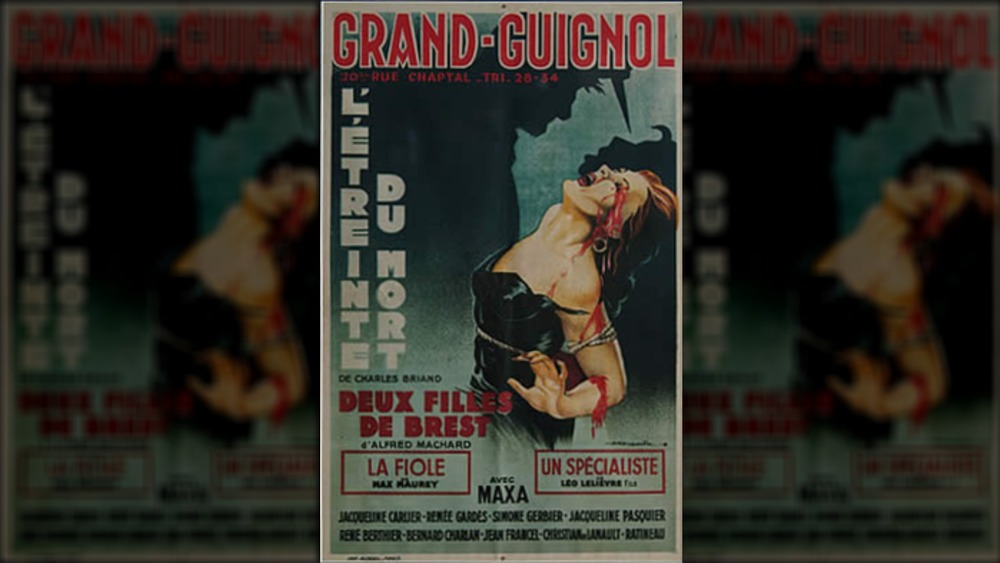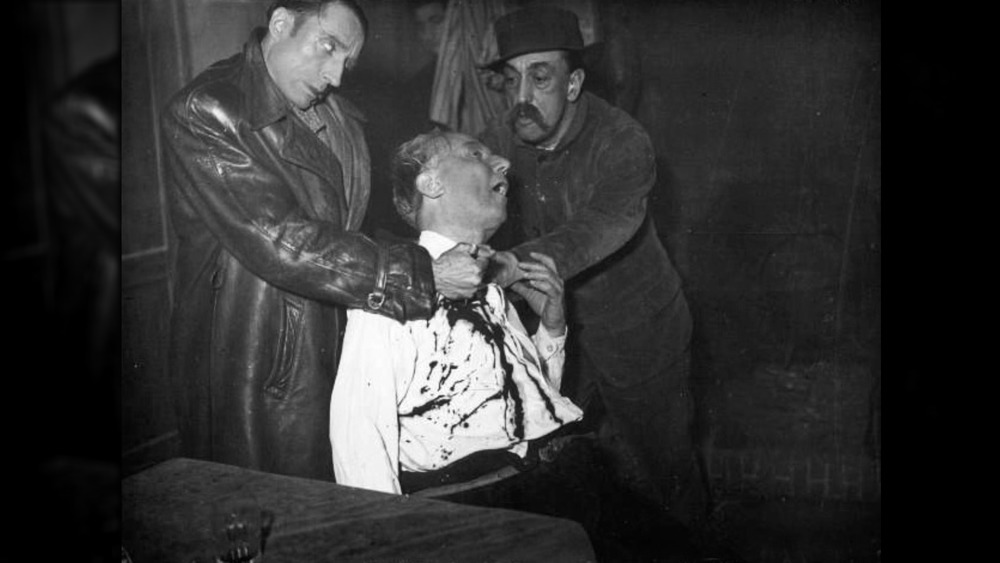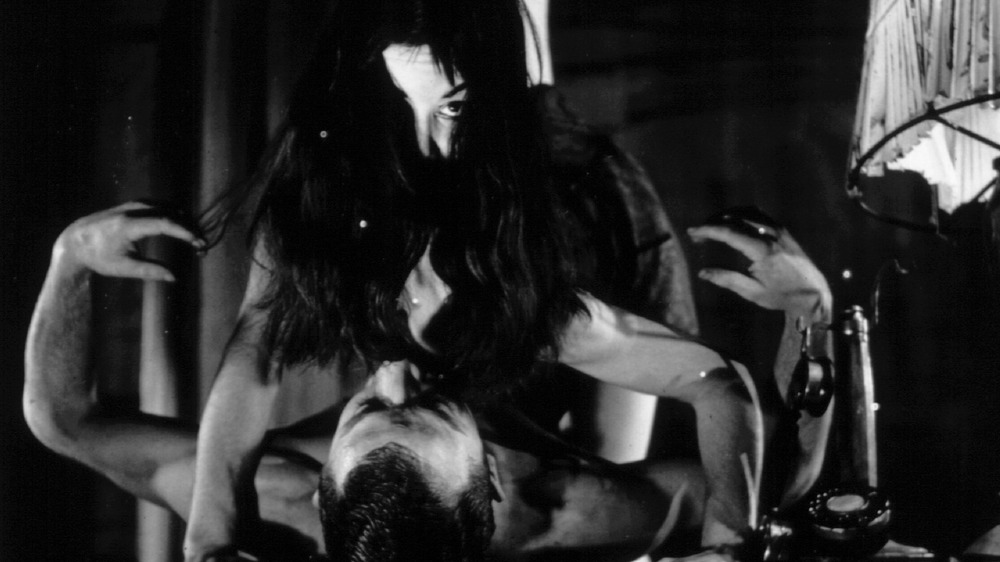A Look At The Origins Of The Grand Guignol
These days, we're used to getting our fix of violence and gore on the silver screen. Films like The Wizard of Gore, Cannibal Holocaust, The Texas Chain Saw Massacre, and Hostel are now what come to mind when we talk about what has come to be known as "torture porn." The graphic violence depicted in these films, however, actually has an antecedent in a small chapel-turned-theater in the Pigalle district of Paris (home to the famous Moulin Rouge cabaret) at the turn of the 20th century: the Theatre du Grand-Guignol. The theater had such an influence on the subsequent horror film genre that its name came to be used as a defining term for blood-spurting, eye-gouging, and throat-slitting. "'Grand-Guignol' is one of those phrases that's entered the language," theater director Richard J. Hand told Diabolique magazine in 2019. "You can rest assured that when any new horror movie comes out, some reviewer will say, 'Ah, it's very Grand-Guignol.'"
From 1897 to 1962, the Grand Guignol horrified thrill-seeking Parisians with its over-the-top depictions of madness, violence, and gore. Although the theater flourished during a time of increased interest in all things horror — it opened in 1897, the same year that Bram Stoker's Dracula was published in England — its brand of terror was uniquely human. It didn't rely on supernatural beings or phenomena to stand the hairs up on audience members' necks. Its featured playwrights pulled their grisly plots from the pages of the newspapers of the day.
The Grand Guignol started as a theater of realism
The Grand Guignol was established by French playwright Oscar Metenier, who purchased an old chapel in the Pigalle district of Paris and didn't even bother taking down the angels hanging over the orchestra pit. (Hand said that the fact that audiences were seeing such gruesome scenes in a deconsecrated chapel added to the overall effect of the horror. The boxes even looked like confessionals.) According to GrandGuignol.com, the name translates literally to the "big puppet show." It comes from a character from a popular puppet show named Guignol who was used as an artistic spokesperson for the silk workers of Lyon, France.
With its success measured by the number of people who fainted during a performance, the Grand Guignol's plays were often censored, like those of its namesake. But while the puppet Guignol was censored for its sociopolitical commentary, the Grand Guignol's plays were censored for their depictions of the rougher aspects of life not normally represented on stage. Metenier's characters were criminals, con artists, prostitutes, street people, and vagrants. One of his first plays, Mademoiselle Fifi, based on the Guy de Maupassant short story of the same name, featured the first-ever onstage prostitute and was consequently censored. His next play, Lui!, put a sex worker and a criminal together in a crummy hotel room. This gritty realism laid the foundations for the horror, blood, and guts that would come to define the theater's playbills for more than half a century.
The Grand Guignol turned into a real house of horror
Metenier's successor was Max Maurey. When Maurey took over as the theater's director in 1898, he realized that the what audiences really wanted to see was spectacular violence and gruesome, graphic imagery. Maurey played on audience reactions as a means of promoting plays. He even hired an in-house doctor to treat the more fearful audience members as a publicity stunt. He also discovered Andre de Lorde, the French novelist and playwright who would be known as "the Prince of Terror." De Lorde worked with his therapist, an experimental psychologist, to get ideas for new manias to feature in his plays. Insanity — a new subject to scientific inquiry, as well — was a principal theme in his works. Based on real-world cases, his characters were necrophiliacs, child-strangling nannies, and other revolting personages who had no business on the mainstream stages of the day.
As the theater's popularity rose, no grotesque subject was off-limits. Sickness, contagion, drugs, hypnosis — just about anything that would lead to a head being chopped off was perfect for the Grand Guignol. The guillotine was a common prop. One technician invented a type of stage blood that coagulated under the lights. "They really made an art of the special effect," said Hand. By 1960, audiences weren't as enthralled by the onstage antics of the Grand Guignol, but the theater had definitely laid the foundations for the gore and horror flicks we know today.


